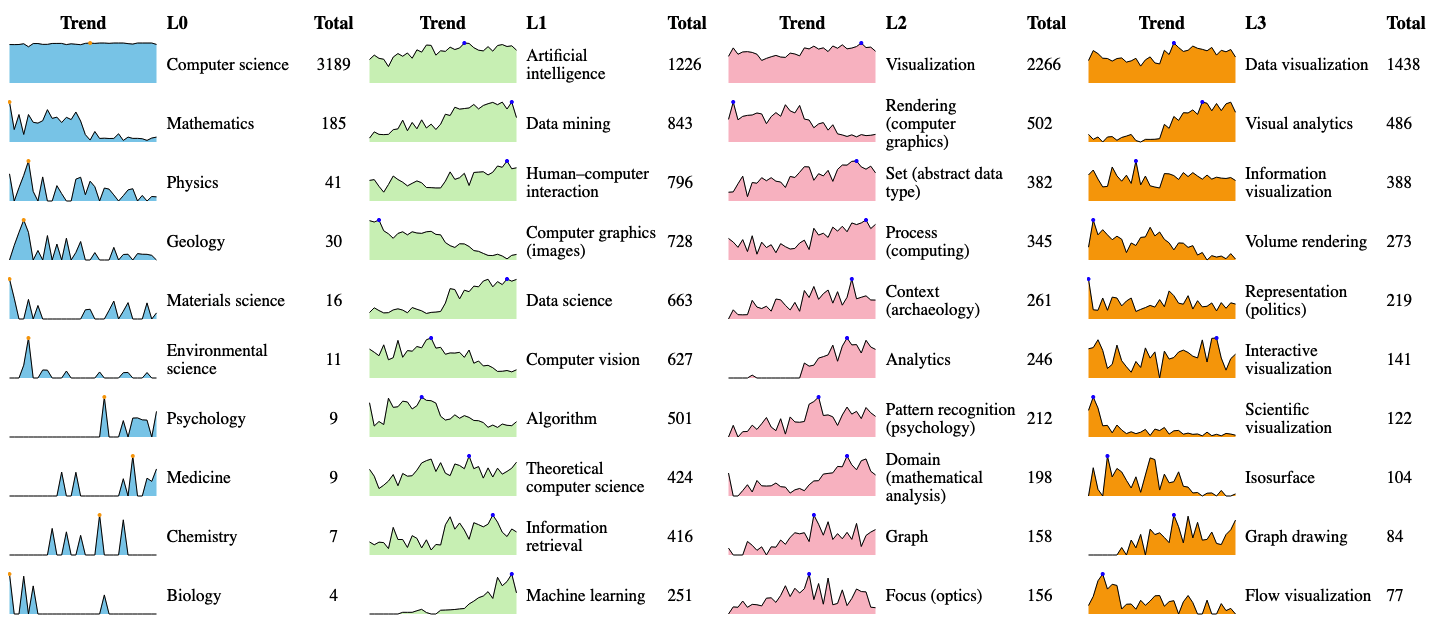Thirty-Two Years of IEEE VIS: Authors, Fields of Study and Citations
Hongtao Hao, Yumian Cui, Zhengxiang Wang, Yea-Seul Kim
View presentation:2022-10-20T19:12:00ZGMT-0600Change your timezone on the schedule page
2022-10-20T19:12:00Z

Prerecorded Talk
The live footage of the talk, including the Q&A, can be viewed on the session page, Reflecting on Academia and our Field.
Fast forward
Abstract
The IEEE VIS Conference (VIS) recently rebranded itself as a unified conference and officially positioned itself within the discipline of Data Science. Driven by this movement, we investigated (1) who contributed to VIS, and (2) where VIS stands in the scientific world. We examined the authors and fields of study of 3,240 VIS publications in the past 32 years based on data collected from OpenAlex and IEEE Xplore, among other sources. We also examined the citation flows from referenced papers (i.e., those referenced in VIS) to VIS, and from VIS to citing papers (i.e., those citing VIS). We found that VIS has been becoming increasingly popular and collaborative. The number of publications, of unique authors, and of participating countries have been steadily growing. Both cross-country collaborations, and collaborations between educational and non-educational affiliations, namely “cross-type collaborations'', are increasing. The dominance of the US is decreasing, and authors from China are now an important part of VIS. In terms of author affiliation types, VIS is increasingly dominated by authors from universities. We found that the topics, inspirations, and influences of VIS research is limited such that (1) VIS, and their referenced and citing papers largely fall into the Computer Science domain, and (2) citations flow mostly between the same set of subfields within Computer Science. Our citation analyses showed that award-winning VIS papers had higher citations. Interactive visualizations, replication data, source code and supplementary material are available at https://32vis.hongtaoh.com and https://osf.io/zkvjm.